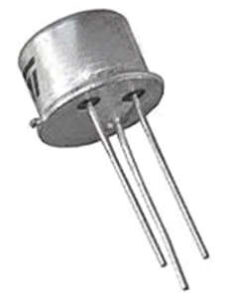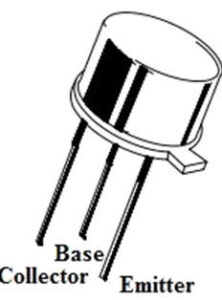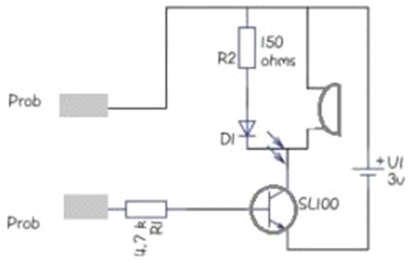- Transistors are the fundamental building blocks of integrated circuits. Transistors like BJTs are currently found in every electronic device and gadget. Both electrons and holes are used in these transistors as charge carriers. PNP and NPN are the two varieties of BJTs that exist. The SL100 transistor, the most prevalent type of transistor, is covered in this article.
What is an SL100 Transistor?
- The SL100 is a medium, all-purpose power NPN transistor that resembles a transistor. Therefore, a wide range of electronic applications, including switching, the design of logic gates, sound reproduction, amplification, signal processing, and radio transmission, require this transistor.

- However, in the setting of CE, it is typically utilized as a switch (Common Emitter). This transistor is turned OFF in the absence of the base signal and is turned ON once a set DC voltage is supplied (biased) and there is a signal on its base terminal.
- A transistor can operate as either a switch or an amplifier depending on how it is biased and which circuits are linked to it. The transistor may transmit or receive radio signals to perform analog mathematical computations or generate signals while performing other tasks while it is acting as an amplifier.
- Similar to how a switch regulates various loads, such as a motor or a light, a transistor also conducts various digital and mathematical operations when acting as a switch.
SL100 Transistor Pin Configuration
- The first letter in a transistor stands for the material, while the second letter stands for the kind of device. Therefore, the first letter of the Sl100 transistor is the silicon material, while the second letter is a device with high power and frequency.

- The SL100 transistor’s pin diagram is displayed below. Base, emitter, and collector are the three pins present on this transistor.
- Within the transistor, the emitter terminal is a projecting edge. The majority of charge carriers are supplied through this terminal.
- The base terminal, which is situated in the middle part, is close to the emitter terminal.
- The majority of the charge carriers supplied by the emitter terminal are collected by the collector terminal.
Features & Specifications of SL100 Transistor
The features and specifications of the SL100 transistor include the following.
- It is an NPN transistor with medium power.
- Storage & Operating Temperature range from-65℃ – 200℃.
- Collector-Emitter (CE) voltage is 50V.
- Output Capacitance is 20pf.
- Collector Base (CB) voltage is 60V.
- DC Current gain is 100 to 300 hfe.
- Emitter Base (EB) voltage is 5.0V.
- The saturation voltage from Base to Emitter is 1.3V.
- Collector Current is 0.5A.
- The saturation voltage from Collector to Emitter is 0.6V.
- Designator Type is SL100.
- Dissipation of Collector Power (Max) is 0.8 W.
- Transistor Material is Si.
- Package is TO-39.
- NPN Polarity.
- Ruggedness is High.
- Easy drive requirements.
- The operating area is highly safe.
- For less distortion balancing designs.
- Easy to handle & carry.
Equivalent Transistors
- Equivalent SL100 transistors mainly include P2N2369, MZT3055, P2N2907A, P2N2369A, PN100, 2CF2325, PN200, BC548B, 2N3055HV, 2N23867, 2N6371H, BD237S, A1941, BD675BPL, BU908F, BF422BPL, 2N3904 & BC301.
How to use SL100 Transistor?
- Below is a circuit diagram for an SL100 transistor, specifically a continuity tester. This circuit is simple enough for beginners to build using a few basic components. The SL100 NPN transistor is important in this circuit. Once the problems are stabilized, this straightforward circuit produces audio sound from the buzzer and visual light from the LED.
- Here, the NPN transistor’s properties can be used to determine if the circuit is closed or not. To power, the LED and buzzer, a 5-volt supply is applied to the collector terminal of this transistor. The transistor’s emitter terminal is directly connected to the battery’s negative terminal.

- Get the two probes from the aforementioned circuit if you want to make sure the circuit is continuous. While the other probe must touch to check for continuity, one must remain at the circuit’s terminal. Therefore, if the circuit’s continuity is good, an LED will light up and a beep will sound.
Applications of SL100 Transistor
The applications of the SL100 transistor include the following.
- Switching.
- Logic Gates Manufacture.
- Reproduction of Sound.
- Amplification.
- Processing of Signal.
- Radio Transmission.
- This transistor is used to make automated circuits like alarm circuits by detecting rain, an indication of water level, etc.
- Some other application circuits like Automatic Street lights, beepers, solar chargers, emergency lights, gas sensors, automatic voltage stabilizers, etc.
Difference Between BC107 & SL100 Transistors
- Buried Channel is referred to as BC in the BC107 transistor, and the 107 refers to the product version that details how many different types of materials were employed to create this particular transistor. In the CE arrangement, a medium power NPN transistor, such as the SL100, serves as a switch. Biasing is the process of providing a stable DC voltage to a transistor’s terminal so it can operate within the desired range of its characteristics.
| Specifications | SL100 | BC107 |
|---|---|---|
| Number of Pins | Three | Three |
| Polarity | NPN | NPN |
| Package | To39 | To18 |
| CE Voltage | 50V | 45V |
| Terminals | Base & Collector Emitter | Base & Collector Emitter |
| Complete Power Dissipation | 800mw | 600mw |
| Gain | Below 100dB | Below 100dB |
| hfe | 125 to 500 | 125 to 500 |
| The capacitance of Operating and storage junction | -65 – 2000C | -65 – 2000C |
| Applications | Switch and General | Switch and Power |
| Amplifier | Purpose Amplifier |
